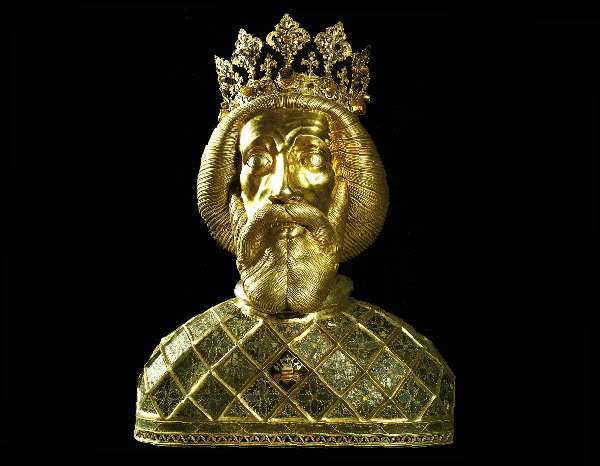The Hungarian Research Institute succeeded in what others did not. They successfully took a sample from the skull relic of King Szent László in Győr's Szent László Herma, while others could not reach this level, and even published in a book that the relic was unsuitable for sampling, meaning that no evaluable DNA could be extracted from it.
"Well, I am happy to announce that the relic contains an amount of DNA suitable for archaegenetic testing," said Gábor Horváth-Lugossy, director general of the Hungarian Research Institute, in an interview with Demokrata. In the long and exhaustive interview, science policy and the institute's achievements so far are also discussed." - Magyar Nemzet reviews this.
Director General : With this scientific step, we have reopened an issue of national importance that was previously considered unsuccessful and closed, and we will carry out the task as it should: at the highest scientific level. It is not the first time that I am sharing the good news that, after the Harvard and Leipzig labs, the Szeged laboratory of the Hungarian Research Institute - built in cooperation with the University of Szeged - is among the most advanced laboratories in the world in the scientific field of archaeogenetics. We can be proud of that - said Gábor Horváth-Lugossy.

General Director Gábor Horváth-Lugossy. Hungarian Research Institute/source/Demokrata
If it turns out that the herma really holds the skull of St. László, this could have several benefits, for example, it will be of great help in further research into the Turul dynasty, because III. After Béla, another ruler belonging to the dynasty can be identified, which can contribute to the identification of new descendants and ancestors in the family tree. Speaking about the political aspect of research into Hungarian prehistory, the director general of the institute explained that left-wing dogmas are still dominant in Hungarian prehistory research, and there are deep reasons for this: A view emerged that could perhaps be characterized as a hyperskeptic view of the left-liberal scientific canon. was positioned in prehistoric research.
Anyone who tried to explore a broad non-Slavic past in one of the cardinal spatial points of the Pan-Slavic ideology, the Carpathian Basin, was almost automatically labeled as "nationalism". Excellent Hungarian researchers became unacceptable to the system due to their political activity (e.g. Bálint Hóman) or simple personal differences, slander, and baseless reports (e.g. Nándor Fettich), their life work had to be roughly erased from the professional public consciousness, and the gap had to be filled with the contribution of professionally unappreciated party activists to replace, said the director.
If we only look at the major historical events that have taken place there in the past thousand years, we are already slapped on the forehead: "how come this hasn't happened until now"? A thousand years ago, Saint Stephen's Basilica of the Assumption began to function in its full sacredness. This became the coronation site of the Regnum Marianum, i.e. the apostolic kings of the Kingdom of Hungary, and then their final resting place. This is a stronghold where our kings were crowned and buried even two hundred years after the Turul dynasty died out. Then, during the Turkish wars, it also took two hundred years before it was completely destroyed, which the Hungarian nation, filling the Christian bastion, could no longer prevent. In 1848, only one intact royal tomb was found, III. Béla's, who was reburied in the Mátyás Church in 1898. Thanks to the previous triple collaboration, the archaeogenetic sampling took place from here, and this is how the origin of the Turul dynasty was established in 2017. If you like, this is the origin.
Source: magyarnemzet.hu
Image: Travel guide













